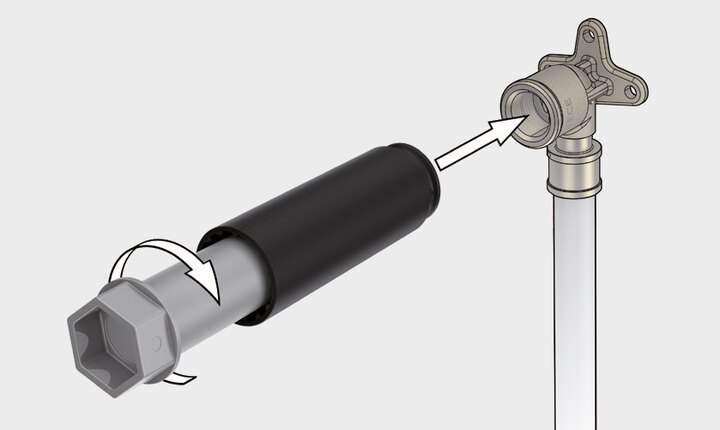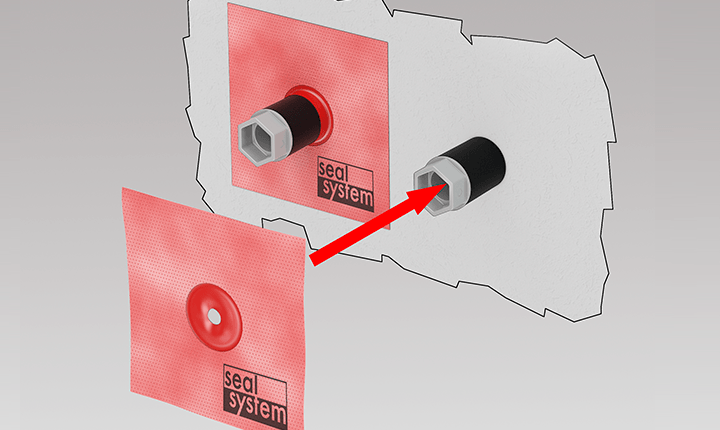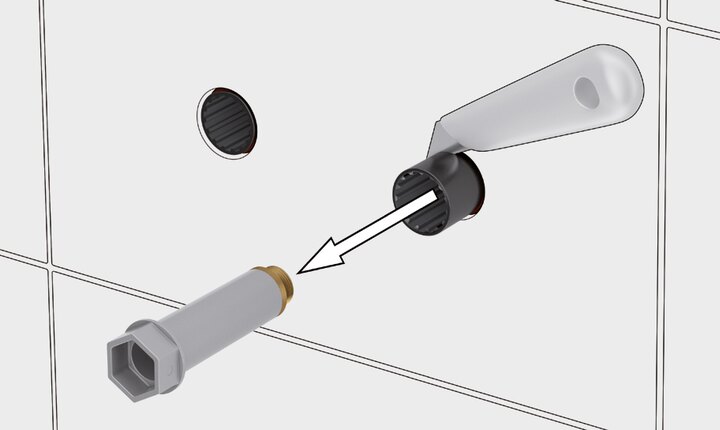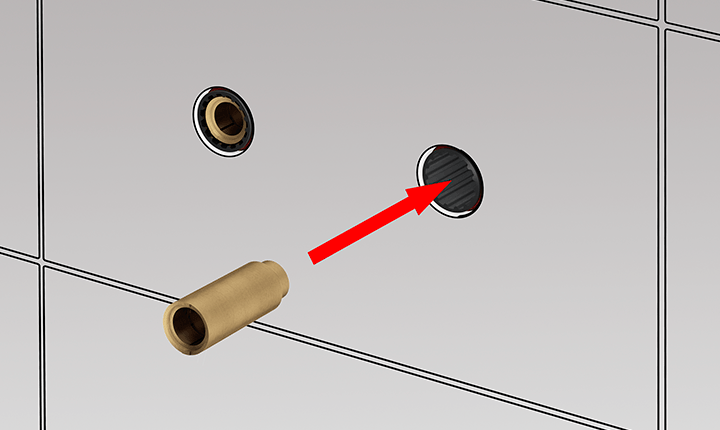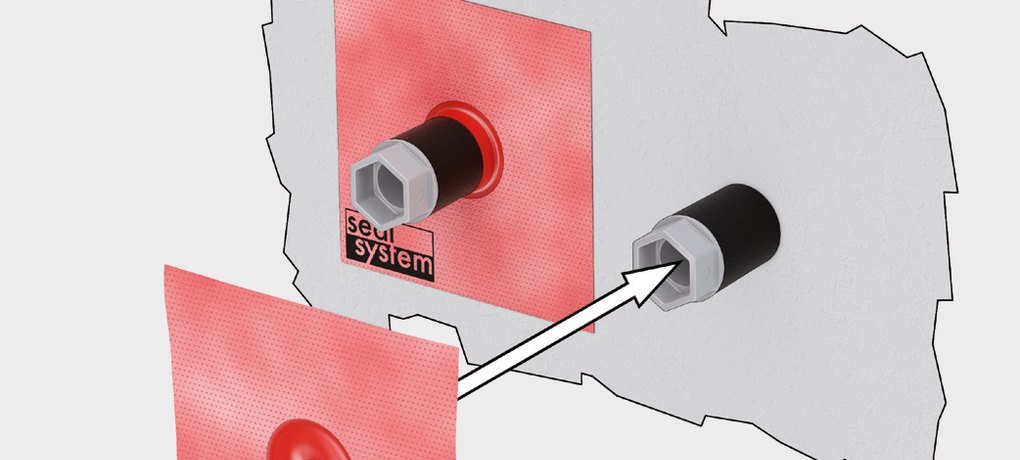
Sealing set from TECE: Sealing wall bushings in accordance with standards
The solution: TECE sealing set for wall bushings
In order to better define the interfaces between the trades and to avoid problems during implementation and liability, we have developed a sealing set that allows installation to be carried out without damaging the tiles or causing water damage. It consists of a building protection plug, sealing sleeve and sealing collar. With the sealing set for wall bushings, fitting connections can be carried out easily and in accordance with standards. A sealing sleeve separates the water-bearing installation from the composite seal. Risks when removing the construction plug are also avoided with our sealing set.
This is how it works:
Case 1:
Sealing the wall bushing of surface-mounted fittings:
When surface-mounted fittings are installed, the connection pipes penetrate the sealing level, which is intended to protect the building against moisture. The fitting connection is made by the installer, the sealing by the tiler. DIN 18534-3, published in summer 2017, defines the requirements for sealing: According to this, a connection pipe must be routed through the sealing level and then sealed to it. The requirement can theoretically be realised with long wall washers or sealed-in tap extensions. However, these would have to be shortened to fit after tiling, which could damage the tiles.
This way, you can seal the wall bushing with the TECE sealing set in accordance with the standards:
The sealing collar is pushed onto the wall disc when the construction plug is screwed in and seals to the outside. The tiler then adapts his sealing to the sealing sleeve with the sealing collar. After unscrewing the construction plug, the sealing collar remains in the wall and the sealing remains untouched. The tap extension is then passed through the sealing collar. In addition, the threaded connection between the tap extension and the wall washer is secured: if it leaks, the leakage water runs out of the wall to the front.
Case 2:
Sealing of building protection plugs:
Difficulties can also arise when installing tap extensions, because this is often only done by the plumber during the finishing phase. For the shell construction phase, the plumber sets a construction plug as a placeholder. The tiler now adapts his sealing sleeve to the construction plug, which, however, is replaced by the much thinner tap extension during final installation. This often leaves an annular gap that cannot be reliably and permanently closed with silicone. However, the plumber is now liable as soon as he unscrews the protective plug. The new standard aims to defuse this conflict and requires the pipe to be extended by a spacer if it does not extend beyond the sealing level.
This way you can safely remove the building protection plug:
With the TECE Seal System safety construction plug, the interface between tiler and plumber is clearly defined and the work of the tiler is therefore no longer influenced by the plumber. The plumber, in turn, can work as usual with tap extensions and has an additional safeguard against leaking tap extensions. In addition, the sealing collar reduces the risk of a sound bridge that transmits the noise of the flowing water to the wall. With an outer diameter of 38 millimetres, the sealing collar is compatible with many sealing sleeves with elastic lip and wall discs from other manufacturers that have a protruding edge all around or a surface without grooves, elevations or embossments.
